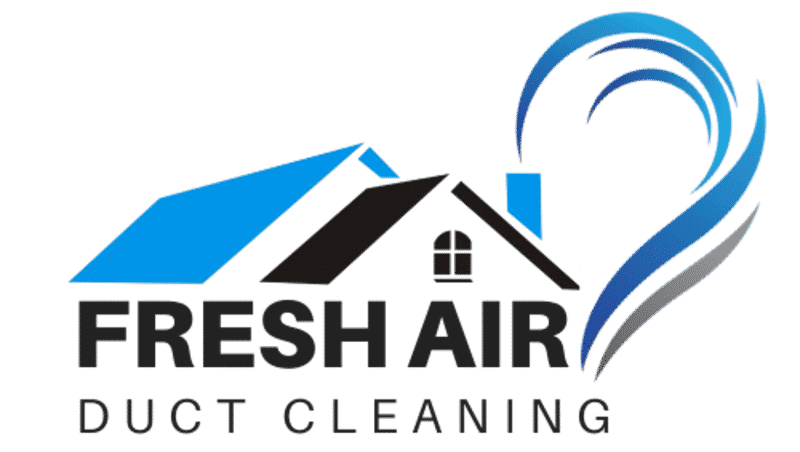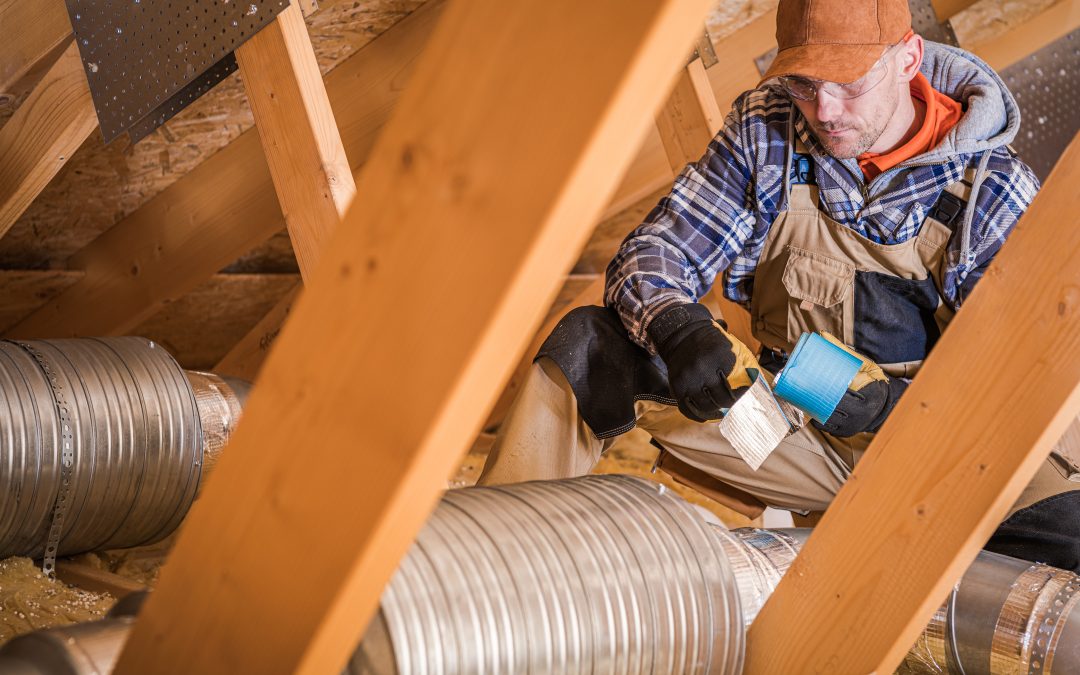
Female engineer looking up at industrial piping in factory
At Fresh Air Duct Cleaning, we know ducts aren’t the most exciting part of your house. They aren’t the star quarterback or the fancy new grill in your backyard. Your ducts are more like the offensive lineman—doing the heavy lifting behind the scenes, making sure your air gets to where it needs to go. But if your air ducts have leaks or holes, you could be paying big money just to cool your attic or walls. Let’s look under the hood and see how air duct repairs can put cash back in your pocket, keep your home comfy, and maybe even take a load off your poor, overworked AC.
What’s Hiding in Your Walls? The Mystery of the Leaky Duct
Imagine driving a truck with holes in the gas tank. You fill it up, but half the fuel soaks into the ground, and you’re left stalling just a few miles from home. Leaky air ducts are a bit like that—except instead of gasoline, it’s cooled or heated air you’re losing. Studies say in many homes, especially older ones around Dallas, about 20% to 30% of that temperature-controlled air escapes before it even reaches your vents. That’s a decent chunk of comfort and cash on the run.
Gaps, cracks, and loose connections in your ductwork work together like a band of money bandits. Every time your system turns on, they steal some of that expensive cooled or heated air and dump it in crawl spaces, attics, or in-between walls—anywhere except your favorite recliner. Your poor AC or furnace now has to work longer and harder to keep up. This not only strains your wallet but also beats up your equipment faster. Your system is running a marathon with a rock in its shoe!
The Domino Effect: How Leaky Ducts Wreck Your Wallet
Fixing leaky air ducts sounds simple, but its effects on your budget are huge. Every time air seeps out, your air conditioner kicks into overdrive, slurping up more electricity. Kind of like how you slam your foot on the gas when you’re late for work—but then you need to fill up the car sooner than you wanted.
Let’s break down the math without frying your brain. Suppose your monthly electricity bill is $200 in hot months (and in Dallas, “hot” is the default setting most of the year). If you’re losing even 20% of your cooled air to leaks, that could mean $40 each month is just vanishing. That’s close to $500 a year, just thrown away. Would you drop that kind of money in a storm drain on purpose? Of course not!
Now, when ducts are sealed and repaired, your air gets where it’s supposed to go. Your AC or furnace calls it quits sooner, and you can set the thermostat where you like without stressing about the electric company sending you a thank-you card.
How Do Ducts Start Leaking Anyway?
Ducts aren’t built to last forever. Over time, Dallas weather takes a toll—it’s hot, it’s humid, it can swing from freezing to frying-pan. Metal ducts expand and contract like an old pair of jeans in the dryer. Flexible ducts sag, twist, or come loose at the joints. Sometimes, if a curious critter makes your attic home, their claws and teeth turn your air ducts into Swiss cheese.
Even new houses are not safe. Sometimes construction crews don’t seal duct joints right or bump them with a hammer or ladder. Next thing you know, you’ve got cracks wide enough for air (and, in our experience, the occasional cockroach) to crawl through.
Here are the most common culprits:
- Disconnected joints—especially in attics and basements
- Cracked seals or old duct tape at connections
- Holes from accidents, animals, or even old nails and screws
- Uninsulated duct sections where temperature swings encourage condensation and rust
- Improperly installed ducts that were never sealed correctly
Your money is literally disappearing through these openings, like Houdini amped up on Red Bull.
The Signs of Trouble: Is It Time to Get Your Ducts Checked?
You don’t have to be Sherlock Holmes to spot leaky ducts. Your house “talks” to you—with your comfort and your bills.
Here are clues that your ductwork might be leaking:
- High energy bills that can’t be explained by the kids leaving doors open (again)
- Rooms that are too hot in the summer or too cold in the winter compared to the rest of the house
- Weak airflow from some vents, while others blast you in the face
- Dust and allergy problems—leaks suck in attic dust, pollen, insulation, even critter droppings
- Your HVAC system runs all the time or goes on and off so often you start thinking it needs a therapist
If you recognize even a couple of these signs, your ductwork might just be crying out for attention.
The Fix: What Really Happens During Air Duct Repairs?
Now, let’s pull back the curtain. What’s the magic trick that makes your ducts work right again?
When the pros show up—like the team at Fresh Air Duct Cleaning—we start with an inspection. We run tests with smoke, pressure, or cameras, depending on your situation. We’ll crawl, climb, and peek until we find every gap and groove. Sometimes, we even find things you didn’t expect, like lost toys or evidence that squirrels had a disco party in your attic.
For repairs:
- Sealants are used on cracks, gaps, and loose joints. We cover them up tight so air stays where you need it.
- Damaged sections get swapped out or patched. Old, falling-apart sections are retired and replaced.
- Insulation is added or repaired on ducts running through hot attics or cold crawlspaces. This keeps air at the right temperature until it hits the vent.
- Flexible ducts are straightened and fastened. No more kinks, sags, or weird twists.
- Leaky vents and registers get resealed or replaced. We want every bit of airflow working for you.
The process isn’t glamorous, but the feeling of a cool, breezy house without sweating over bills—that’s worth a high five!
Energy Savings: Let’s Talk Real Numbers
Plenty of folks ask, “Will duct repairs really save me money? Or is this some kind of HVAC snake oil?” Don’t worry, we’re not selling you miracle soap at the county fair. Here’s what government studies say: Proper duct sealing and insulation can drop your bills by up to 20%. For folks in Dallas, where an air conditioner’s practically a family member, that’s a chunk of change.
Fixing leaky air ducts often pays for itself in just a couple of years. It’s like getting a raise without doing any extra work, except for occasionally changing your air filters. Imagine the things you could do with those savings—grill more steaks, buy a new fishing rod, or finally grab that racing game chair you always wanted.
More Perks: It’s Not Just About the Money
Saving bucks is nice, but duct repairs deliver other goodies, too:
- Better comfort: No more tiptoeing through ice-cold or sauna-hot rooms. Your vents carry air evenly to every spot in the house.
- Less dust: Sealed ducts suck in fewer particles, pet hair, and attic funk. That means less sneezing and dusting.
- HVAC equipment lasts longer: When your AC or furnace isn’t working overtime, it goes years longer before it needs repairs or replacement.
- Quieter operation: Sealed ducts don’t pop, whistle, or rattle nearly as much. Now your house only creaks when Grandpa gets up too fast.
- Cleaner air: Fewer gaps mean less chance for bugs, pollen, or insulation to get dragged into the air you breathe.
If you ask us, that’s a solid home upgrade.
Do-It-Yourself or Call in the Pros?
Every so often, someone asks if they should just crawl into their attic with a roll of duct tape. We get it—there’s a certain pride in DIY. But trust us, duct tape is for keeping your bumper on, not for sealing air ducts. It dries up, falls off, and leaves you back at square one.
Professional duct repair pros use the right materials and equipment—and know where to look for hidden leaks. Some leaks are easy to spot. Others are tucked away in tight spots or even inside walls. Imagine playing hide-and-seek with air—air always wins, unless you have the right tools.
Plus, a lot of homeowners insurance policies want the pros to do the job. If you accidentally tear up your insulation or step through the ceiling, you’ll have more than just leaks to worry about. Sometimes, a little light humor is the only thing that keeps us from crying after crawling in those attics ourselves!
How Often Should You Get Your Ducts Checked?
Here’s our rule of thumb: Get your air ducts checked every couple of years, or whenever you notice your bills creeping up for no good reason. If you’ve just moved into a place, or if your home is over ten years old, it pays to take a look sooner rather than waiting for problems. Dallas weather is hard on ductwork.
If you’ve had a rodent issue, major renovations, or you suspect a previous HVAC “fix-it” was closer to sabotage than repair, don’t wait. Even a single bad joint is enough for air to escape—fast.
Fresh Air Duct Cleaning: Dallas’ Best Bet for Lower Energy Bills
So, to wrap up: Leaky air ducts let your hard-earned cash float right out of your house. Repairs seal the leaks, keep your air inside, and reduce the load on your HVAC system. The result? Lower bills, better comfort, a cleaner house, and a longer-lasting AC system. That’s a win from every angle.
If you want to take control of those crazy energy bills, give Fresh Air Duct Cleaning a shout. We’re your go-to team in Dallas, TX for sniffing out duct leaks and sealing them up right. We promise to treat your home like it’s our mom’s—and trust us, that’s saying a lot.
Ready to stop wasting money and start living more comfortably? Call Fresh Air Duct Cleaning today at (214) 239-1832 or visit us online at https://bestairducts.com. Let’s patch up those leaks and turn your house into an energy-saving powerhouse!

